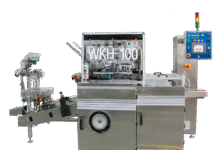In aseptic pharmaceutical manufacturing, the packaging for parenteral packaging components is essential for enabling and ensuring proper sterilization. Ineffective component packaging can potentially affect patient safety and lead to significant financial losses. Manufacturers of drug products and parenteral packaging components should consider the following five points in evaluating this packaging. This article focuses on steam-sterilizable bags for parenteral packaging components.
End-use functionality: Sterilizable bags must withstand the filling, heat sealing, sterilizing, packing/cartoning, shipping, and end-use handling associated with parenteral packaging components intended for aseptic manufacturing. Properties of the materials of construction must be well understood. Tensile strength, porosity, elongation-at-break, and puncture resistance should be assessed to determine material robustness. In particular, heat sealing evaluations should be conducted to achieve an effective seal. Knowledge of the material properties provides the necessary insight into the ability of sterilizable bags to maintain package integrity during intended use.
Sterilization capability: Steam must be able to easily ingress and egress sterilizable bags. Assessments should be made to demonstrate that the required Sterility Assurance Level (SAL) can be achieved necessary for aseptic manufacturing. Often these assessments are made with biological indicators (BIs) or inoculated components with a known Dvalue and population of microorganisms. Further, it must be ensured that the materials of construction are compatible with steam temperatures (i.e. no melting occurs).
Packaging integrity: Sterilizable bags must maintain package integrity throughout the targeted expiry, including all aspects of processing, handling and shipping. Assessment of this often relies upon ISO 11607, Packaging for Terminally Sterilized Medical Devices, and ASTM D 4169-16, Standard Practice for Performance Testing of Shipping Containers and Systems. Commonly, methods such as internal pressurization testing or methylene blue testing may be performed to examine for pinholes and tears.
Chemical compatibility: Sterilizable bags must have no or limited chemical interaction with the parenteral packaging components. To demonstrate this, extraction and simulation studies on the materials of construction should be conducted to thoroughly characterize the material and to determine the risk level of potential leachables due to intended use. In order to replicate the propensity for extractables from the sterilizable bag to migrate in water (steam) to the parenteral packaging components during sterilization, a simulation assessment may include processing the sterilizable bags through a typical steam sterilization cycle followed by aqueous extractions of the materials.
Packaging specifications: Sterilizable bags have a direct impact on the quality of the components packaged within. It is critical to ensure that the appropriate bioburden, endotoxin and particulate specification limits are established and achieved. Control strategies, such as incoming inspection testing, also should be used to ensure that there is no statistically significant lot-to-lot variability and no sterilizable bags out of specification.
Well-designed, validated and controlled packaging for parenteral packaging components is one of many factors that is critical to achieving success during aseptic manufacturing of pharmaceutical drug products. Assessing end-use functionality, sterilization capability, packaging integrity, chemical compatibility and packaging specifications is critical to ensure the suitability of component packaging.












